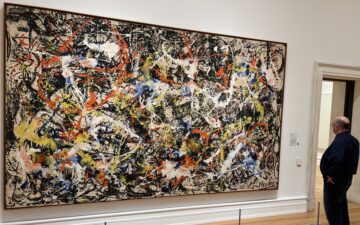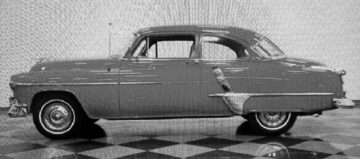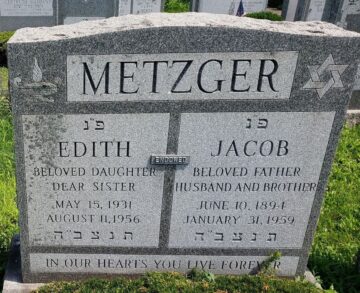by Steve Szilagyi

The Naked Gun trilogy was a series of three film comedies released between 1988 and 1994. They were directed by David Zucker, who founded a new school of parody with his breakthrough movie, Airplane! (1980). Part of Zucker’s genius was casting grim-visaged actors from serious films and letting them loose in a perfectly silly universe. Leslie Nielsen, Lloyd Bridges, Kareem Abdul-Jabbar—he made some brilliant casting choices. He also made one grotesque error: O.J. Simpson.
Long ago, I interviewed Simpson for a publicity job and came away thinking that he was the greatest guy in the world. When the Naked Gun films came out, I laughed my head off. Simpson was in all three of them. He wasn’t much of an actor, but I thought he was a great sport to let Zucker use him as a slapstick stooge—just what I would expect from a super guy like Simpson.
Then came the murders of Nicole Brown and Ronald Goldman. After learning the details of that crime, I could never watch a Naked Gun film again. How could I? How could anyone laugh freely at a film that has the face of an atrocious killer in every shot?
Confronting Convergence. Something like this happened to me on a recent visit to the Buffalo AKG Art Museum. Among the masterpieces in the museum’s collection is Jackson Pollock’s Convergence (1952), one of his classic drip paintings. My usual practice (and probably yours) when viewing a Pollock is to stand back for a few minutes to take it all in, then move in close and mentally merge with Pollock’s universe of speckles and swirls.
This is what I started to do with Convergence. But I couldn’t take that last step. Something was blocking me, and I knew exactly what it was: my recent reading of historian Henry Adams’ book Tom and Jack: The Intertwined Lives of Thomas Hart Benton and Jackson Pollock.
Adams’ book is a splendid dual biography, full of insights and revelations. What came back to me, however, as I stood in the Buffalo museum, was Adams’ account of August 11, 1956, the last day of Pollock’s life, and the painter’s role in the death of an innocent young woman.
Human wreckage. By August 11, 1956, Pollock was the most famous painter in America. He was also a piece of human wreckage, pickled in alcohol, and living with his mistress, Ruth Kligman, in a farmhouse on Long Island. Ruth Kligman was a bohemian and a kind of Cedar Bar groupie. Her lovers included Willem de Kooning and Franz Kline. Ruth had a friend named Edith Metzger. She was 25 years old. Adams describes her as a beautician from the Bronx (other sources say she was a secretary from Manhattan).
Edith Metzger’s family escaped Nazi Germany in the 1940s and settled in New York. She and Ruth were close enough friends that Ruth invited Edith to come out to Long Island to stay overnight with her and her celebrity boyfriend. On the morning of August 11, Pollock drove Ruth to the train station to collect Edith—whom he’d never met.
In Adams’ account, after coming back from the train station, Pollock spent the afternoon “crying and drinking a bottle of gin.” Someone who saw him that day said, “He looked like a mess.” That night, he offered to drive Kligman and Metzger to a concert. On the way, he stopped at a bar and went in to make a phone call. Adams writes:
“Realizing he [Pollock] was drunk, Edith got out of the car and refused to get back in, but Jackson ordered her back.”
Once they were all in the car, Pollock started to drive crazily.
“Edith began to scream, ‘Let me out! Let me out!’ and as she did so, Jackson pushed the accelerator to the floor. As was the case when he attended parties in the 1930s, something about screaming women escalated his behavior—drove him into a frenzy.”
Pollock was fed up with the screaming woman in the back seat. He drove faster and more erratically until the car flew off the road, rolled over on Edith, and crushed her to death. According to her gravestone, she left a sibling or siblings, and a 62-year-old father who outlived her by five years.
There may be some room for doubt, but Pollock’s death seems to have been a murder-suicide, committed in a fit of drunken pique (Adams might not agree). My awareness of all this—especially the detail about forcing Edith back into the car—prevented me from abandoning myself to Convergence at the Buffalo museum. Wherever Pollock’s mind was, I didn’t want to go there anymore.
Peccadillos a-plenty. Funny, because I don’t usually get all judgmental about artists. I’m happy to overlook the disapproval that surrounds artists like Eric Gill, Pete Seeger, Woody Allen, Stephen Foster, Wilhelm Furtwängler, etc., and enjoy their works. Not to mention the sexual improprieties associated with almost every artist, everywhere, ever. But for some reason, murder curdles.
The painter Michelangelo Caravaggio killed a man back in the Renaissance. Does anyone think about the victim when admiring the painter’s chiaroscuro? His near contemporary Benvenuto Cellini writes proudly of having killed a rival artist (among others) in his Autobiography—yet no one favors melting down Cellini’s beautifully wrought gold sculptures as if they were, I dunno, statues of Confederate generals.
The “maybe” men. I can be more lax about artists who only maybe committed murder. Singer Jerry Lee Lewis remains a favorite, despite his reputation as an abusive spouse and the mysterious deaths of two of his wives. And come to think of it, he literally called himself “The Killer.”
Singer-songwriter Larry Williams had a couple of his songs covered by the Beatles and repaid the Goddess of Good Fortune by becoming a drug dealer, pimp, and gangster who may possibly have made some rivals disappear. Still, I’m going to keep listening to “Dizzy Miss Lizzie,” “Slow Down,” and “Bony Moronie” as I have all my life.
And is anybody prepared to give up the Beatles? In his controversial 1988 biography The Lives of John Lennon, Albert Goldman claims that John Lennon participated in the fatal back-alley beating of a German sailor during the band’s Hamburg era. Goldman gives no source, and no one has come forward to corroborate the claim. But it always made sense to me. It would explain the almost systematic program of self-annihilation Lennon undertook at the height of the Beatles’ fame—turning himself overnight from the world’s coolest man to one of its biggest saps. Divorce, heroin, alcoholism, nude photos, seclusion, lousy albums. It was almost as if he had a guilty conscience that wouldn’t allow him to accept all the adulation. Contrast him with the well-adjusted Paul McCartney, who’s comfortably basked in the world’s hosannas for the past 60 years.
Nail in the Coffin. It seems almost karmic that Lennon’s post-Beatles career grew intertwined with that of producer Phil Spector, a fully credentialed great artist and murderer. Spector produced epic singles like “Be My Baby” and “Da Doo Ron Ron” before producing (badly) the Beatles’ Let It Be album and shooting actress-model Lana Clarkson to death in 2003.
Almost as if they were being sucked into a dark vortex, Lennon and Spector, at one point, got mixed up with Morris Levy, owner of Roulette Records—a gangster who could make or break a hit record and who is said to have broken legs and heads while doing so. Together, the three of them made Rock ‘n’ Roll, an album on which Lennon murders favorite songs from the 1950s and puts the final nail in his own musical coffin.
A line we don’t cross. Then there’s the Beach Boys. A friend of mine who, like me, is a big fan of early 1960s Beach Boys, learned from the band’s biography that their drummer Dennis Wilson was friends with Charles Manson and helped the cult leader record demo tracks of his original songs. My friend messaged me, “You ought to hear Manson’s record. Some of the songs aren’t bad.”
Yeah, no thanks. And speaking of rock ‘n’ roll, here’s a superficial irony worthy of a split second of your time. Most cultural historians agree that the first rock ‘n’ roll hit was “Rocket 88,” released in 1951 by the Ike Turner Band, with lead vocals by Jackie Brenston. Turner was a true father of rock ‘n’ roll and, by all accounts, a violent and often drug-addicted man. “Rocket 88” celebrates the Oldsmobile 88—the same model car Jackson Pollock used to kill Edith Metzger one year later.

From Naked Gun to Naked Lunch. A book-collecting friend of mine once had author William Burroughs as a houseguest while in the process of buying some original manuscripts. I don’t think I could have joined them for breakfast, even with, as it happened, Allen Ginsberg dropping by. I wouldn’t have had the stomach for it. Back in the 1950s, Burroughs raised a pistol and shot his wife, Joan Vollmer, through the forehead in a drunken game of William Tell, in Mexico. Burroughs escaped accountability by fleeing the country and (some say) oiling the exit with family money.
Unlike Burroughs, Ernest Hemingway was a great writer whom I am sometimes tempted to reread. Hemingway bragged about having shot a sneering, taunting German prisoner point-blank in the head during a World War II interrogation. Many doubt his account. But who would boast about something like that, true or not? He also claimed to have killed dozens of men in combat, including the accidental shooting of a teenage bicyclist in France. Of all the major artists going back to Cellini, Hemingway would seem to have produced the highest number of fatalities—capping it all off by murdering himself.
Compare Hemingway to Mark Twain, who joined a Confederate militia unit during the Civil War and may have been involved in the killing of a civilian horseman mistaken for the enemy. Twain deserted the unit soon after and, far from bragging about this incident, wrote a powerful, self-deprecating account (“The Private History of a Campaign That Failed”) that leaves the reader feeling hollow and sorry, as one should when contemplating the fatal ironies of war.
Laying it on the label. While compiling this list of life-taking artists, the names of several other painter, writer, actor, and musician killers occurred to me—none of them, fortunately, among my most cherished idols. Except for Jackson Pollock. That’s a tough one. How I’d love to be able to once again enter Gallery 919 in the Metropolitan Museum of Art and enjoy the perpetual surprise of Pollock’s Autumn Rhythm (Number 30) and bask in the fresh breeze of its gray modernism. Or return to Buffalo and converge with Convergence.
I have an idea that might help me feel better. Traditionally, museum labels tell us the name of the work, the name of the artist, the name of the donor, or the name of the museum that lent the artwork. With all those names, how about including one more? For paintings by Jackson Pollock, they could say, “Displayed in honor of Edith Metzger.” It wouldn’t take up much room, and it might make some people—well, me—feel better.

Enjoying the content on 3QD? Help keep us going by donating now.
